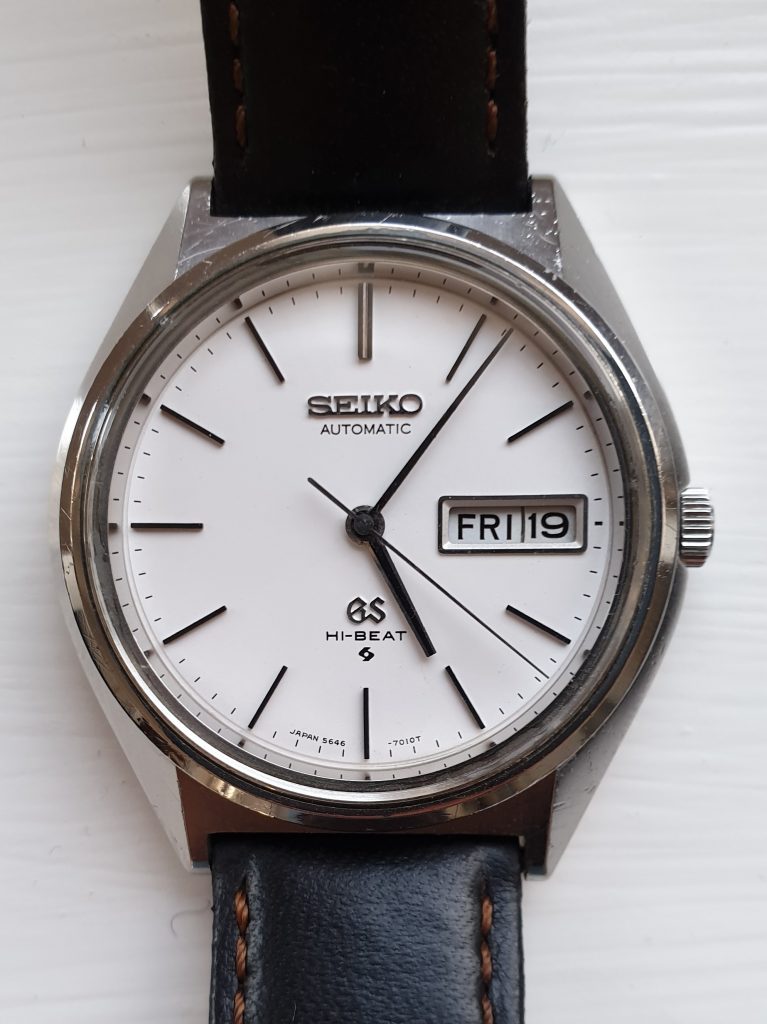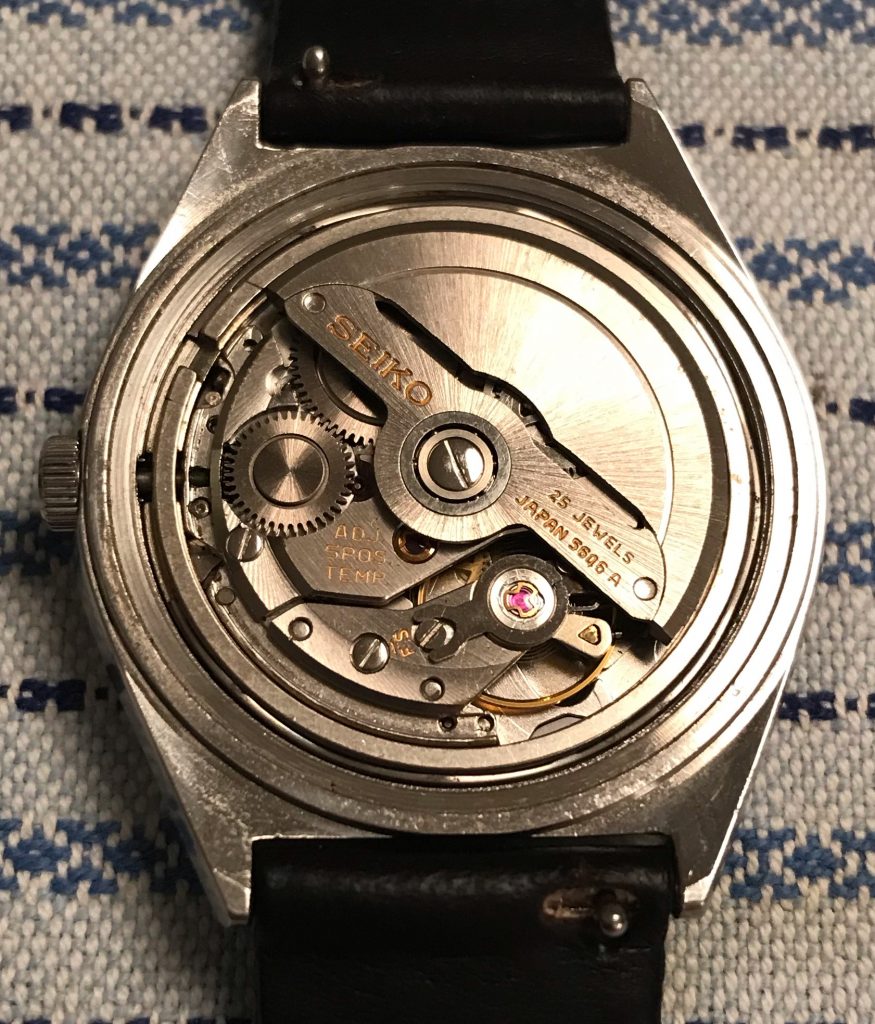| Brand | Seiko |
| Model | 5646 7010 |
| Year | 1971 |
| Caliber | Cal 5646A Case nr 17xxxx |
| Details | Size 36/11/18 (w/h/lug) Born july 1971… Serviced june 2020 Take care using quick-set.. .. if repair needed check out |
| Links | The GS guy |
| Search | dba.dk / “Grand seiko” |
Be carefull when using quick-set !
The plastic component on the Cal. 56 quickset gear is the Achilles heal of this otherwise fabulous movement. As a result, quickset should NOT be used between 9PM and 3AM to prevent wear to the gear.
The last Grand Seiko
As the last of the Vintage Grand Seiko series, the range of the 56GS series is second only to the 61GS concerning the diversity of watches produced. Whilst utilizing only three different movements and no “special” or “VFA” examples in this series, 35 different models were produced from 1970 until 1974. One can find them in the catalogues 1971-1975.
The 56GS used the no-date 5641A, the 5645A date and the day-date 5646A, making this the only series with all three complications. To make all the variations, for the first time automation was introduced into the production line, and the beat of the movement was set to 28,800bph. Precision may have suffered, as a decrease in speed will do, but the reliability increased. Some people even consider 28,800 bph to be the best for a watch movement with its balance of maintenance, reliability and precision. As these movements were mass produced, it is easy to get parts for the 56GS even now, 40 years after production, making it eminently serviceable. Of course, a somewhat less finely tuned caliber 56 movement was also used in the King Seiko 56 series and the Lord-matics 5606.
Case designs
While there is a large variety of case designs, unlike the 61GS series, there is consistency in design and case numbering used. Adhering strongly to the “Grammar of Design” rules, the -7010 and -7011 watches are almost certainly the most solid vintage Grand Seikos that you see on the market today. It is believed that the difference between the two cases is simply a move from marking the cases as being “waterproof”, to “water resistant”, but this remains unconfirmed. It is not consistent however with the 5646 models seen, where both -7010 and -7011 references are marked as being “Water Resistant”.
There were many -7000 cases available for the 5645/6 movement and dials varied, For the -7010 the plentiful silver, the more uncommon white (!), the black and the navy. Gold cap models existed too. There was the 5646-7020, a striking watch featuring a case similar to that found on the 61GS VFA’s; a pillowcase model with tall indices, a polished case with a central fold line and only in a green dial.
Almost as a matter of course.. even the ever so coveted diamond dust quartzes of the mid seventies had their ancestor in the rare GS 5646-7030, with its finely dusted diamond dial and its unique lug width of just 17mm.
Finally, another unique case only with the 5646 day-date movement, it is the 5646-7040, unique amongst all vintage Grand Seikos in using applied Arabic numerals on the dial, once again inspiring many quartzes that were to come.
Bracelet confusion
The first appearance of the 564x-7010/1 in the 1972 catalogue shows the 5646 on a bracelet – the 5645 is only shown on a strap. However, The XQB011 is listed as the bracelet for the 5645-7010/1 and the 5646-7010/1. The same coonfusion reigns for the GS -7030, listed on leather, but can be worn on bracelet too.
To make matters worse, as can be seen in a later Seiko catalogue shot for the 5645-7010, a completely different bracelet is shown for the watch. In the 1973 catalogue we see both the 5645 and the 5646 on the same bracelets. The reference number is XQB 070.
Thus, it would appear that at some time between 1972 and 1973, Grand Seiko swapped out the XQB 011 bracelet for the XQB 070. Whether or not the former was ever available at retail mounted on the 5645-7010/1 is probably impossible to determine, although clearly it was marketed as an after-purchase option.

